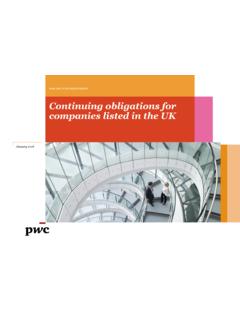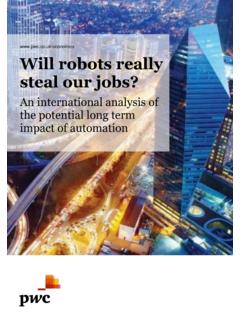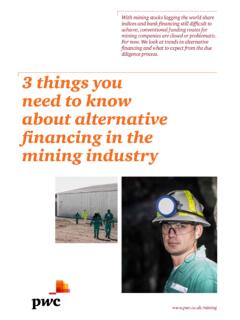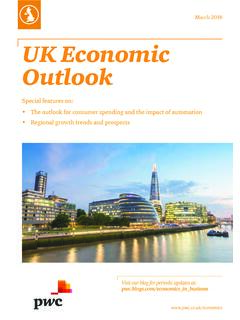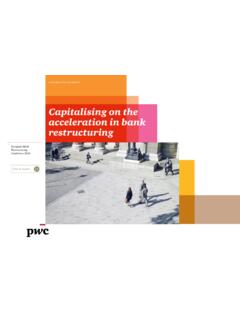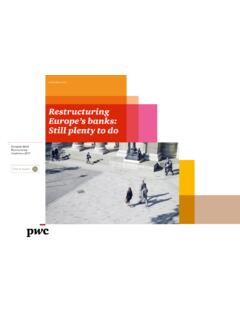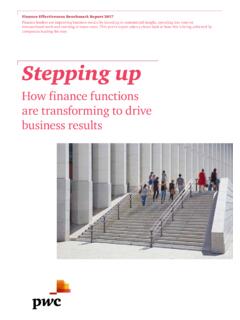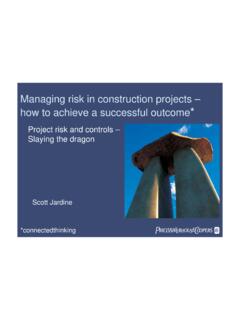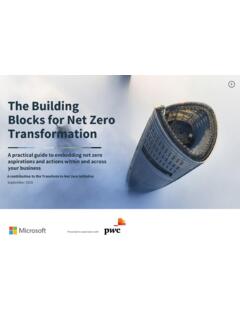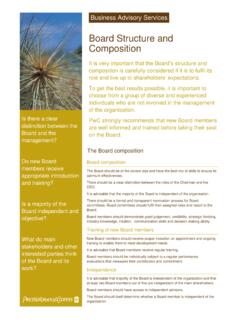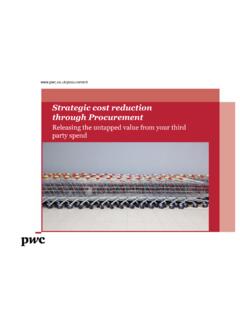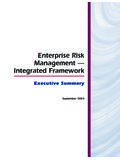Transcription of Permanent establishment risk review – what it means for you?
1 Permanent establishment risk review what it means for you?Why action should be taken nowThe increased interest in PE rules as a result of the OECD s proposals, coupled with the pace of change in the complexity of global business models and with increasing numbers of internationally mobile staff. Is expected to lead to tax authorities across the globe focusing resources on mounting more effective PE risk of inadvertently creating a PE is therefore a key risk area for multinational corporations and the effective control of PE risk, including a PE risk review , can form an essential part of a multinational corporation s wider tax control are the indicators of PE risk?
2 Under the current treaty definition of PE, the threshold of activity of an enterprise in one territory that results in the creation of a PE in another territory is determined by two forms of presence as follows. Fixed place of business test An enterprise has a PE in another territory if it has a fixed place of business there through which it carries on its business, subject to a number of specific activity exemptions. The Permanent establishment (PE) threshold test is contained in many countries domestic tax laws and double tax treaties. It determines whether a business has sufficient activity in another territory to create a taxable presence in that other territory from a corporate tax multinational groups may have found that PE issues were not a key area of focus for many tax authorities in the past, this position is now changing in light of the OECD s proposals outlined in Action 7 of the Base Erosion and Profit Shifting (BEPS) project, which relates to addressing the perceived artificial avoidance of PEs by multinational corporations.
3 Dependent agent test An enterprise has a PE in another territory where a person (other than an independent agent) is acting on its behalf, and habitually exercises an authority to conclude contracts in its name, in that other addition to the above, some double tax treaties include the concept of a services PE, which can be created where an enterprise in one territory performs services in another territory through one or more individuals over a defined period of time. In practice, this type of PE is less common but should still be considered for the purpose of managing PE are the benefits of getting this right?
4 Pro-actively managing PE risk can provide the following: comfort on a potentially high-profile area of challenge; reduce the risk of unexpected tax payments by minimising the risk of errors, including penalties and interest charges; identification of opportunities for tax efficiencies and/or improvements to the internal control framework; and the ability to make appropriate disclosures to tax authorities showing that reasonable care has been taken to manage PE issues, reducing the risk of challenge and happens if a PE is not managed correctly?
5 A PE risk that is not correctly managed can result in: damage to reputation; unfunded and corporate tax liabilities; potential indirect tax cost in a territory if appropriate VAT registrations have not been made; increased audits from tax authorities resulting in increased management time and cost being incurred; penalties and interest charges; long unprovided for issues can lead to the requirement to restate financial accounts; employer reporting obligations, including payroll and social security; immigration considerations for employees; and regulatory issues (for certain industries).
6 Some practical steps you can take nowEnsuring you are able to maximise value in a cost-effective manner according to factors such as territory and/or business line complexity, known issues and the perceived level of risk is important. We can help you to ensure your specific needs across the relevant markets and territories are met by the following. Full scope reviews Interviews and discussions with relevant individuals, alongside desktop reviews, are used to drill down into the operational practice of documented policies and procedures and to assess and challenge the methodology of each business unit and the approach to governance of operational risk against current tax standards applied by the business.
7 Desktop review Where the level of PE risk is considered to be low, a full scope review may not be the most cost-effective option. Sufficient coverage could instead be provided through a rules-based desktop review of the policies, procedures and processes applied in each territory and business line, and benchmark these against central governance requirements and those of the local territory. Focussed scope For areas where the level of PE risk is perceived to be moderate, the focussed scope review replaces detailed interviews with the use of standard questionnaires/surveys of key personnel, alongside a desktop review of the policies and procedures applied by the business to manage PE alternative focussed scope option is to adopt the full scope approach, but limit the detailed analysis of risks identified to a smaller, pre-agreed set of publication has been prepared for general guidance on matters of interest only.
8 And does not constitute professional advice. You should not act upon the information contained in this publication without obtaining specific professional advice. No representation or warranty (express or implied) is given as to the accuracy or completeness of the information contained in this publication, and, to the extent permitted by law, pricewaterhousecoopers LLP, its members, employees and agents do not accept or assume any liability, responsibility or duty of care for any consequences of you or anyone else acting, or refraining to act, in reliance on the information contained in this publication or for any decision based on it.
9 2015 pricewaterhousecoopers LLP. All rights reserved. In this document, PwC refers to the UK member firm, and may sometimes refer to the PwC network. Each member firm is a separate legal entity. Please see for further WatsonPartnerT: +44 (0)20 7804 2253 E: CollierPartnerT: +44 (0)20 7212 3395 E: CooperDirectorT: +44 (0)20 7213 5212 E: RaeDirectorT: +44 (0)20 7213 3033 E: out morePlease contact one of the team below or your local PwC contact.
